Buy Paraffin Wax in Bulk: Pure, Wholesale Paraffin Wax for Candles, Beauty, and More
What is Paraffin Wax?
Paraffin wax is a colorless, odorless solid substance composed primarily of saturated hydrocarbons with straight chains. Chemically, it consists of alkanes with the general formula CₙH₂ₙ₊₂, where “n” represents the number of carbon atoms, typically ranging between 20 and 40. The molecular structure of paraffin wax features long carbon chains bonded covalently to hydrogen atoms, making it a non-polar compound with excellent chemical stability.
This wax appears as a crystalline solid with a melting point usually between 46°C and 68°C. Paraffin wax is highly resistant to water and many solvents, yet it dissolves easily in non-polar solvents such as ether and benzene. These physical and chemical properties make it suitable for a wide range of industrial and commercial applications.
Premier LMP 75: Pure Light Paraffin for Industrial Excellence | Oil-Based Quality
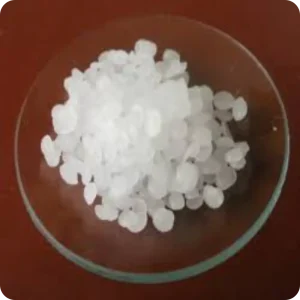
Buy Paraffin Wax in Bulk: Pure, Wholesale Paraffin Wax for Candles, Beauty, and More
Types of Paraffin Wax
Paraffin wax is broadly classified into two main types:
Solid Paraffin Wax: This is the typical form of paraffin wax at room temperature. It is commonly used in candle making, waterproof coatings, cosmetics, and insulation materials due to its solid state and melting behavior.
Liquid Paraffin (Mineral Oil): This variant contains shorter hydrocarbon chains, giving it a liquid or oily consistency. Liquid paraffin is widely utilized in lubricants, pharmaceuticals, and specialized industrial processes.
The key difference between solid and liquid paraffin wax lies in their carbon chain length and physical state. Longer carbon chains result in a solid wax with a higher melting point, while shorter chains produce a liquid with a lower melting point.
Thanks to its distinctive chemical structure and physical properties, paraffin wax is a versatile and highly valued material across multiple industries, providing predictable and reliable performance for various uses.
Paraffin Wax Production Process
Paraffin wax is primarily derived from petroleum, a complex natural resource composed of various hydrocarbons. The production process begins with crude oil, which undergoes several refining steps to extract and purify paraffin wax for commercial and industrial use.
Raw Materials
The main raw material for paraffin wax production is crude oil or heavy fractions obtained from petroleum refining. Specifically, paraffin wax is extracted from slack wax, a byproduct of lubricating oil refining, which is a mixture of oil and wax that requires further processing to isolate pure wax.
Wholesale Industrial Petroleum Jelly Supplier | High-Quality Bulk Vaseline
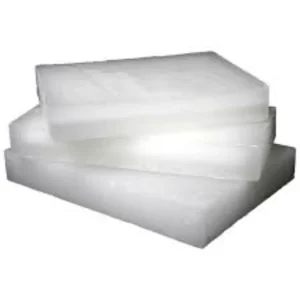
Buy Paraffin Wax in Bulk: Pure, Wholesale Paraffin Wax for Candles, Beauty, and More
UltraPure 70 Hygienic Petroleum Jelly – Premium Bulk Vaseline for Ultimate Skin Protection
Manufacturing Stages
Crude Oil Distillation
The first step is to separate crude oil into its component fractions based on their boiling points through atmospheric and vacuum distillation. Heavier fractions containing waxy hydrocarbons are collected for further treatment.Dewaxing (De-oiling)
The slack wax undergoes a cooling and crystallization process known as dewaxing, where solvents (such as ketones) may be added, and the mixture is chilled. During this phase, wax crystallizes out, separating from the oil. The solid wax crystals are then filtered to remove oils, resulting in a higher wax content.Purification and Refining
The semi-refined wax is subjected to further purification steps to remove impurities and unwanted color or odor. Common refining methods include:Solvent treatment, dissolving the wax in solvents and re-precipitating it.
Clay treatment, using activated clay to adsorb impurities.
Decolorizing and deodorizing processes to enhance appearance and odorlessness.
Optional hydrotreating can also be applied to improve wax quality by removing residual impurities under high temperature and pressure with hydrogen.
Premium Bulk Vaseline – Medical, Cosmetic & Industrial Grade1
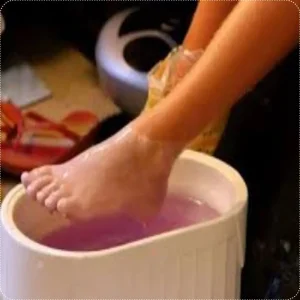
Buy Paraffin Wax in Bulk: Pure, Wholesale Paraffin Wax for Candles, Beauty, and More
Ultra 72 Strength Heavy Paraffin Wax – Bulk Industrial Grade for Superior Performance
Quality Standards and Grading
The oil content in the wax is a key factor for grading. Lower oil content defines a more purified wax, categorized as semi-refined or fully refined. High-quality paraffin wax must meet strict industry standards regarding melting point, oil content, color, and odor characteristics, ensuring suitability for applications in candles, cosmetics, packaging, and more.Forming and Packaging
Finally, the purified paraffin wax is cooled and formed into blocks, pellets, or flakes, ready for distribution and industrial use.
Thanks to this detailed and controlled production process, paraffin wax delivers consistent quality, versatility, and performance across a wide range of industrial and commercial applications.
Physical and Chemical Properties of Paraffin Wax
Paraffin wax is a white to colorless, odorless solid, mainly composed of saturated hydrocarbons (alkanes) with carbon chains typically ranging from 20 to 40 atoms. Its molecular structure consists of long, straight or branched carbon chains covalently bonded to hydrogen atoms, giving it unique physical and chemical characteristics suitable for diverse industries.
Melting Point
Paraffin wax has a moderate melting point that usually varies between 46°C to 68°C (115°F to 154°F) depending on its grade and purity. The melting point is a critical property that allows paraffin wax to transition easily between solid and liquid states, making it ideal for applications like candle making, cosmetics, and industrial coatings where controlled melting is essential.
Resistance to Water and Heat
One of the standout physical properties of paraffin wax is its hydrophobic (water-repelling) nature, which makes it highly resistant to water absorption. This water resistance is why paraffin wax is widely used as a protective coating in packaging, wood treatment, and waterproofing applications.
Regarding heat, paraffin wax exhibits thermal stability within its melting range and beyond, with a relatively high ignition point around 199°C (390°F). This stability allows it to resist breakdown or combustion under typical usage conditions, especially in insulated or flame-resistant products.
“Top 75 Purity Premium Light Paraffin Wax – Bulk Industrial Grade for High Performance”

Buy Paraffin Wax in Bulk: Pure, Wholesale Paraffin Wax for Candles, Beauty, and More
Ultra 85 Industrial Petroleum Jelly – Bulk Premium Grade for Heavy-Duty Protection
Special Features for Various Applications
Chemical Inertness: Paraffin wax is chemically stable and shows minimal reactivity under standard conditions. It is resistant to oxidation and does not easily interact with acids, bases, or other chemicals, making it safe and reliable for pharmaceutical and food-related uses.
Electrical Insulation: Due to its non-polar and solid nature, paraffin wax serves as an excellent electrical insulator, making it valuable for insulating cables and electronic components.
Consistency and Texture: Paraffin wax provides a smooth, malleable texture in its solid form which is exploited in cosmetics, lubricants, and skincare products for moisture retention and texture enhancement.
Varied Grades: Paraffin wax is available in semi-refined and fully refined grades, with differing oil contents that influence hardness, melting point, and clarity, thus catering to specific needs across industries such as candles, cosmetics, food coatings, and pharmaceuticals.
This comprehensive description highlights the most relevant physical and chemical properties of paraffin wax, aligning with what buyers and industrial users seek in their product specifications.
Applications of Paraffin Wax
Paraffin wax is a versatile material widely used across many industries due to its unique physical and chemical properties. Its applications range from manufacturing candles to cosmetic products, pharmaceuticals, food packaging, and insulation materials.
Candle Making Industry
One of the primary and most well-known applications of paraffin wax is in candle manufacturing. Its solid form, easy melting behavior, and clean-burning characteristics make it ideal for producing candles of various shapes and sizes. Paraffin wax provides a stable base for incorporating fragrances and colors, making it highly popular among candle makers worldwide.
Cosmetic and Pharmaceutical Uses
Paraffin wax plays an essential role in the cosmetic and healthcare industries. It is used as a key ingredient in the production of creams, lotions, and ointments, providing moisturizing and protective qualities to skin products. In pharmaceuticals, paraffin wax is employed as a coating for pills and tablets to control dissolution rates and improve shelf life. Its inertness and safety profile make it suitable for these sensitive applications.
Food Industry and Packaging
In the food sector, paraffin wax is utilized as a coating agent for certain food products like cheese and fruits, extending shelf life by preventing moisture loss and microbial contamination. It also serves in food packaging to create moisture barriers and maintain product freshness. Due to its hydrophobic nature, paraffin wax helps protect packaging materials from water damage.
Insulation and Protective Coatings
Paraffin wax contributes significantly to industrial insulation and protective coating applications. It is used for waterproofing paper, textiles, and wood products, as well as in rubber manufacturing to prevent cracking and enhance durability. The wax’s electrical insulation capacity also makes it valuable for protecting cables and electronic components from moisture and environmental damage.
Role in Skin Care and Beauty Products
In skin care, paraffin wax is valued for its ability to retain moisture and soften skin, making it a foundation ingredient in spa treatments such as paraffin hand and foot baths. Its emollient properties improve skin texture and provide a protective barrier against dryness and environmental factors, promoting healthier skin.
What is Vaseline (Petroleum Jelly)?
Vaseline, also known as petroleum jelly or petrolatum, is a semi-solid mixture of hydrocarbons derived from the distillation and refining of crude oil. It was discovered in the 19th century and has since become a widely used product in medical, cosmetic, and industrial fields. Chemically, Vaseline is a blend of mineral oils, microcrystalline waxes, and other petroleum-derived substances, giving it a soft, gel-like consistency that is colorless or slightly yellowish, odorless, and water-repellent.
Difference Between Vaseline and Paraffin Wax
While both Vaseline and paraffin wax originate from petroleum refining, their chemical composition, physical state, and applications differ significantly:
Paraffin Wax is a solid waxy substance composed mainly of saturated hydrocarbons (alkanes) with longer carbon chains (typically C20-C40). It appears as a firm, crystalline, colorless or white solid with a melting point between 46°C and 68°C. Paraffin wax is hard and brittle at room temperature and is used extensively in candle making, coatings, insulation, and industrial applications.
Vaseline (petroleum jelly) has shorter hydrocarbon chains in a semi-solid form, giving it a soft, greasy texture rather than solid. It does not crystallize but rather forms a gel-like, occlusive barrier on the skin. Unlike paraffin wax, Vaseline is primarily used for its moisturizing, protective, and healing properties in medical and cosmetic contexts.

Buy Paraffin Wax in Bulk: Pure, Wholesale Paraffin Wax for Candles, Beauty, and More
Features and Applications of Vaseline in Medical and Cosmetic Industries
Moisturizing and Skin Protection: Vaseline forms a protective barrier on the skin that locks in moisture, helping to treat dry, cracked skin and minor wounds. It is widely employed to soothe skin irritations, burns, eczema, and chapping.
Healing and Barrier Function: Due to its inert, non-reactive nature, Vaseline protects damaged skin from external irritants while facilitating the natural healing process by maintaining a moist environment.
Cosmetic Uses: Vaseline is a popular ingredient in lip balms, lotions, and creams because of its emollient properties. It improves skin texture, prevents moisture loss, and serves as a base or thickener in various skincare formulations.
Medical Applications: In healthcare, Vaseline is used as a lubricant for medical instruments, a base for topical ointments, and a protective coating for minor cuts and scrapes.
In summary, while paraffin wax is primarily a hard wax used industrially and in manufacturing, Vaseline is a refined petroleum jelly designed for skin care and medical uses owing to its soft texture, protective qualities, and compatibility with sensitive skin.
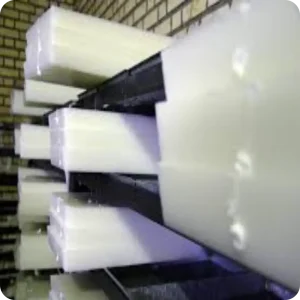

Buy Paraffin Wax in Bulk: Pure, Wholesale Paraffin Wax for Candles, Beauty, and More
Advantages and Key Tips for Buying Paraffin Wax and Vaseline in Bulk
Buying paraffin wax and vaseline (petroleum jelly) in bulk offers several important benefits and opportunities for businesses, especially wholesalers and manufacturers.
Advantages of Bulk Purchasing
Cost Savings: Purchasing in large quantities usually comes with volume discounts, reducing the price per unit and overall procurement costs.
Consistent Quality: Buying from a reputable supplier in bulk ensures uniform quality across batches, which is critical for industrial, cosmetic, or pharmaceutical applications.
Supply Security: Having sufficient stock reduces the risk of supply chain disruptions and minimizes the need for frequent orders, saving time and logistical costs.
Better Negotiation Power: Bulk buyers often have greater leverage to negotiate favorable payment terms, delivery schedules, and after-sales support.
Reduced Shipping Costs: Consolidated shipments lower transportation expenses and decrease the carbon footprint associated with frequent deliveries.
Key Tips for Bulk Buying Paraffin Wax and Vaseline
Assess Product Quality and Specifications
Verify that the product complies with relevant quality standards and certifications (such as purity, melting point, oil content).
Request detailed lab analysis reports or certificates of analysis to check parameters like color, odor, viscosity, and chemical composition.
Ensure the type of paraffin (solid, liquid, refined, semi-refined) or vaseline grade matches your specific requirements.
Choose Reputable and Experienced Suppliers
Evaluate supplier credibility by reviewing their market reputation, customer feedback, and years of experience.
Prefer suppliers who provide guarantees for product quality and on-time delivery.
Consider suppliers that offer after-sales support and flexible payment options.
Negotiate Price and Terms
Compare prices from multiple suppliers and inquire about discounts for large volumes or long-term contracts.
Discuss payment terms, including options for installments, upfront payments, or credit facilities.
Examine Packaging and Shipping Conditions
Ensure bulk packaging (drums, blocks, or flakes for paraffin; barrels or containers for vaseline) protects the product from contamination and moisture.
Confirm that shipping methods maintain product integrity during transit and delivery.
Storage and Handling Recommendations to Maintain Quality
Temperature Control: Store paraffin and vaseline in a cool, dry place away from direct sunlight and sources of heat. Ideal storage temperature is below the melting point for paraffin wax (generally below 46°C) and room temperature for vaseline.
Humidity: Avoid exposure to moisture or high humidity, as this can degrade product quality and promote contamination.
Sealed Containers: Keep paraffin and vaseline sealed in airtight containers or packaging to prevent oxidation, dust ingress, or microbial contamination.
Avoid Contamination: Handle products with clean equipment and maintain hygienic storage environments, especially for grades used in cosmetics or pharmaceuticals.
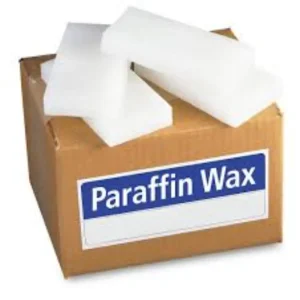
Buy Paraffin Wax in Bulk: Pure, Wholesale Paraffin Wax for Candles, Beauty, and More
FIFO Inventory Management: Use a first-in, first-out system to ensure older stock is used before newer deliveries, minimizing aging or degradation.
By following these purchasing and storage guidelines, you ensure high-quality paraffin wax and vaseline that meet your business needs while optimizing costs and supply reliability.
Safety and Environmental Considerations for Paraffin Wax and Vaseline
Safety When Using and Storing Paraffin Wax and Vaseline
Avoid Direct Contact with Open Wounds: Paraffin wax can cause irritation or inflammation if applied on broken or damaged skin. Avoid using paraffin products on open wounds or skin infections to prevent adverse reactions.
Temperature Control During Use: When heating paraffin wax (such as for therapeutic or cosmetic uses), keep the temperature below 50°C (122°F) to avoid burns or fire risk. Overheating can cause the wax to ignite or produce harmful fumes.
Sensitive Individuals Caution: People with diabetes, poor circulation, or skin conditions like varicose veins should consult a healthcare provider before using paraffin wax due to increased risk of skin damage or sensitivities.
Proper Storage: Store paraffin wax and vaseline in cool, dry places away from direct sunlight and heat sources to maintain quality and reduce fire hazards. Use airtight containers to protect from contamination and moisture ingress.
Avoid Inhalation and Ingestion: Both products are intended for external use only and should not be ingested or inhaled. Avoid applying vaseline near mucous membranes such as eyes or inside the nostrils to reduce respiratory risks.
Environmental Impacts of Paraffin Wax and Vaseline
Petroleum-Derived Products: Both paraffin wax and petroleum jelly are derived from non-renewable fossil fuels (crude oil), making their production and use linked to environmental concerns such as carbon emissions and resource depletion.
Non-Biodegradability: These products are not readily biodegradable, leading to potential accumulation in the environment if improperly disposed of, which can harm soil and water ecosystems.
Air Pollution from Burning: Burning paraffin wax (e.g., in candles) can emit soot, volatile organic compounds (VOCs), and other pollutants, which contribute to indoor and outdoor air quality issues.

Buy Paraffin Wax in Bulk: Pure, Wholesale Paraffin Wax for Candles, Beauty, and More
Strategies to Reduce Environmental Impact
Use Refined and High-Quality Products: Choosing highly refined paraffin wax reduces the emission of harmful byproducts during use.
Responsible Disposal: Avoid disposing of paraffin wax and vaseline down drains or in soil. Follow local hazardous waste guidelines to minimize environmental contamination.
Alternative Materials: Consider using bio-based or sustainable wax alternatives (such as soy wax) where possible to reduce petroleum dependency.
Ventilation When Burning: Ensure proper ventilation when using paraffin candles indoors to minimize indoor air pollution.
Supplier Sustainability: Source from suppliers committed to environmental responsibility, including efficient refining practices and carbon footprint management.
By following these safety guidelines and environmental strategies, businesses and consumers can use paraffin wax and vaseline products responsibly, ensuring user safety while minimizing ecological impact.








